Weedy Seadragons Citizen Scientist Project Needs More Eyes On The Seas, Sands + Shores: The SeadragonSearch Project
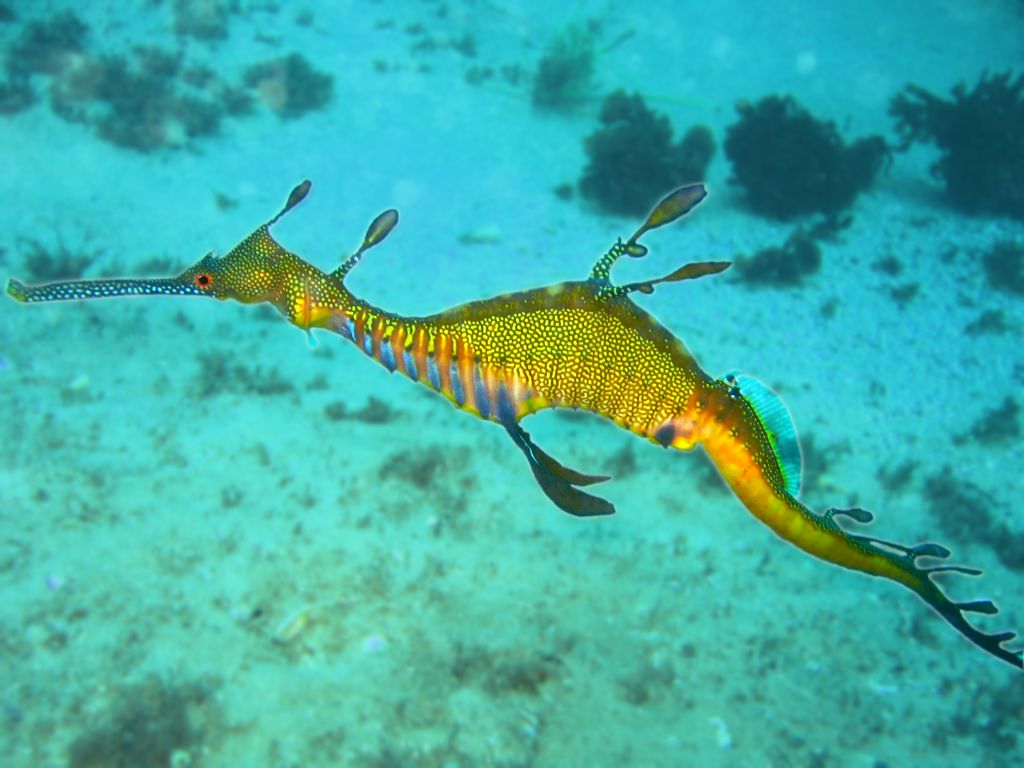
These studies and plans will inform a Review of Environmental Factors (REF) that will be considered by Council staff prior to the works being approved. Appropriate mitigation measures outlined in the REF and a Fisheries Permit will be applied during the construction phase to minimise environmental impacts.
Living here in the Pittwater estuary is the White's seahorse, which is listed as Endangered in NSW. The primary cause for the decline in abundance of White's Seahorse is the loss of natural habitats across their range in eastern Australia. The seahorses occur within coastal estuaries and embayments which are areas subject to population pressure.
This is why you will see signage around the estuary edge cautioning you to be careful not to damage their habitat, whether on the estuary or on the beach.
Another local species, the Weedy Seadragon, Phyllopteryx taeniolatus, live along much of the Pittwater estuary foreshores and right along our beaches from Palm Beach to Manly. These seadragons are often seen around piers, pylons and jetties in association with seagrass meadows and seaweed beds.
Scientists consider Weedy Seadragons to be near threatened with extinction. Without continued careful management of the human activities that affect seadragon populations, the species could become more seriously at risk of being lost.
They are yet another local species with a second name of being a 'common seadragon' even though they are not so common anymore, and another reason to tread carefully when you are in or near their homes, or 'habitat' as it otherwise called.
Weedy Seadragons are found only in Australian coastal waters where they are mostly found in a thin strip of shallow water along the coastline. Although they appear to be seaweed when drifting in the water column almost motionless, Weedy Seadragons are actually bony fish.
Taking or possessing Weedy Seadragons (or any other species of protected fish) is an offence and heavy penalties apply. For corporations, these penalties can include fines of up to $55,000 while individuals can face fines of up to $11,000 and up to 3 months in prison.
Adverse weather conditions can cause high levels of natural mortality in Weedy Seadragons.
They are poor swimmers and may be washed ashore during storms or heavy seas. During the April 2022 storms residents were finding them washing ashore, with 20, in one case, washing up on Narrabeen beach and others found at Palm Beach, Bungan, Mona Vale, Warriewood and Turimetta beaches. This recurred in July of that year.
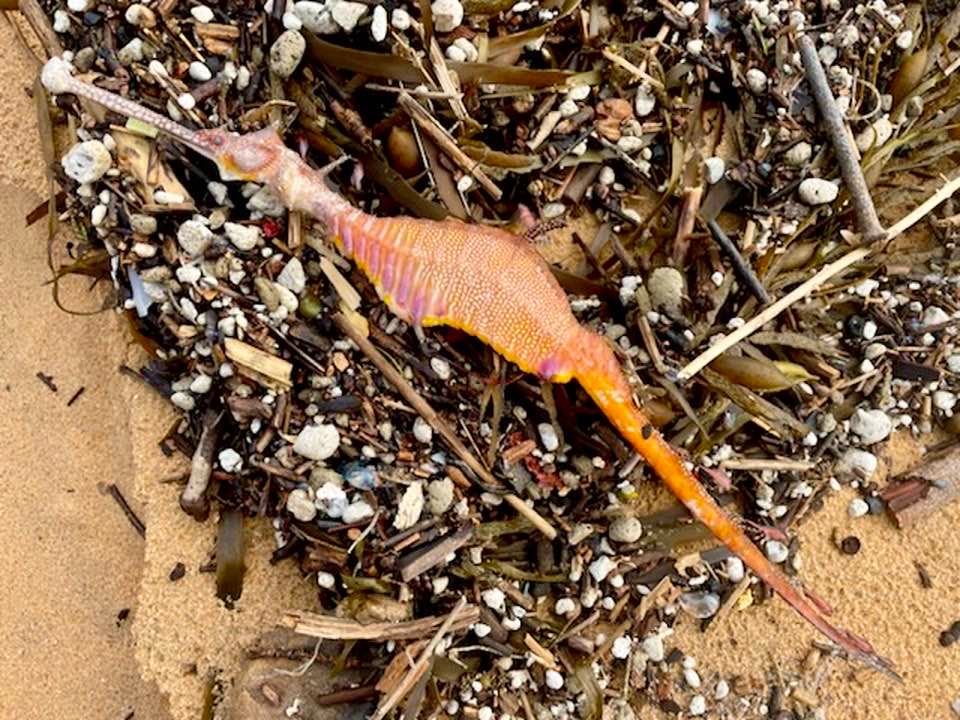
Weedy Seadragon at South Palmy July 8th 2022. Photo: Adriaan van der Wallen - there is a colony of these off Barrenjoey at a dive site called 'Weedy Seadragon'
However, there is something you can do about it apart from doing what you should do when in these places by not damaging their habitat.
Seadragon expert Dr David Booth, a professor of marine ecology at the University of Technology Sydney, and Dr Selma Klanten, Associate Researcher at University of Technology Sydney, are part of a 10 year research project, SeadragonSearch. This is a community-driven research initiative using artificial intelligence in a decade-long quest to identify, understand and protect seadragons and their habitats.
But, they need your help - they need more citizen scientists sending in sightings.
Over the past few weeks Joe Mills has been in touch with the UTS/Weedy Seadragon Research Unit, to offer them some dead specimens he and friends found at the northern end of Turimetta Beach. Research Scientist Dr Selma Klanten has subsequently picked them up with thanks.
In discussions with her, she mentioned she was not sure how far up the coast these little creatures live, as their main data comes from Sydney, Cronulla and Wollongong.
Joe mentioned to her that their call for citizen scientists would reach a few locals along the coast with an aquatic bent through Pittwater Online News and so now we ask you, our local divers, beach walkers and swimmers and fishermen to help with weedy seadragon sightings, and where and when, and a contact for them to get back to, and send these in to UTS.
Even those you find washed up on beaches will be of help with their work.
SeadragonSearch will use AI tools to recognise individual dragons from photos taken by community members and uploaded to the project’s website. The resulting data about their lifespans and other traits will inform conservation policy for these charismatic fishes and their habitats.
That's right, like any other species on the planet, including ours, every single Weedy Seadragon is an individual.
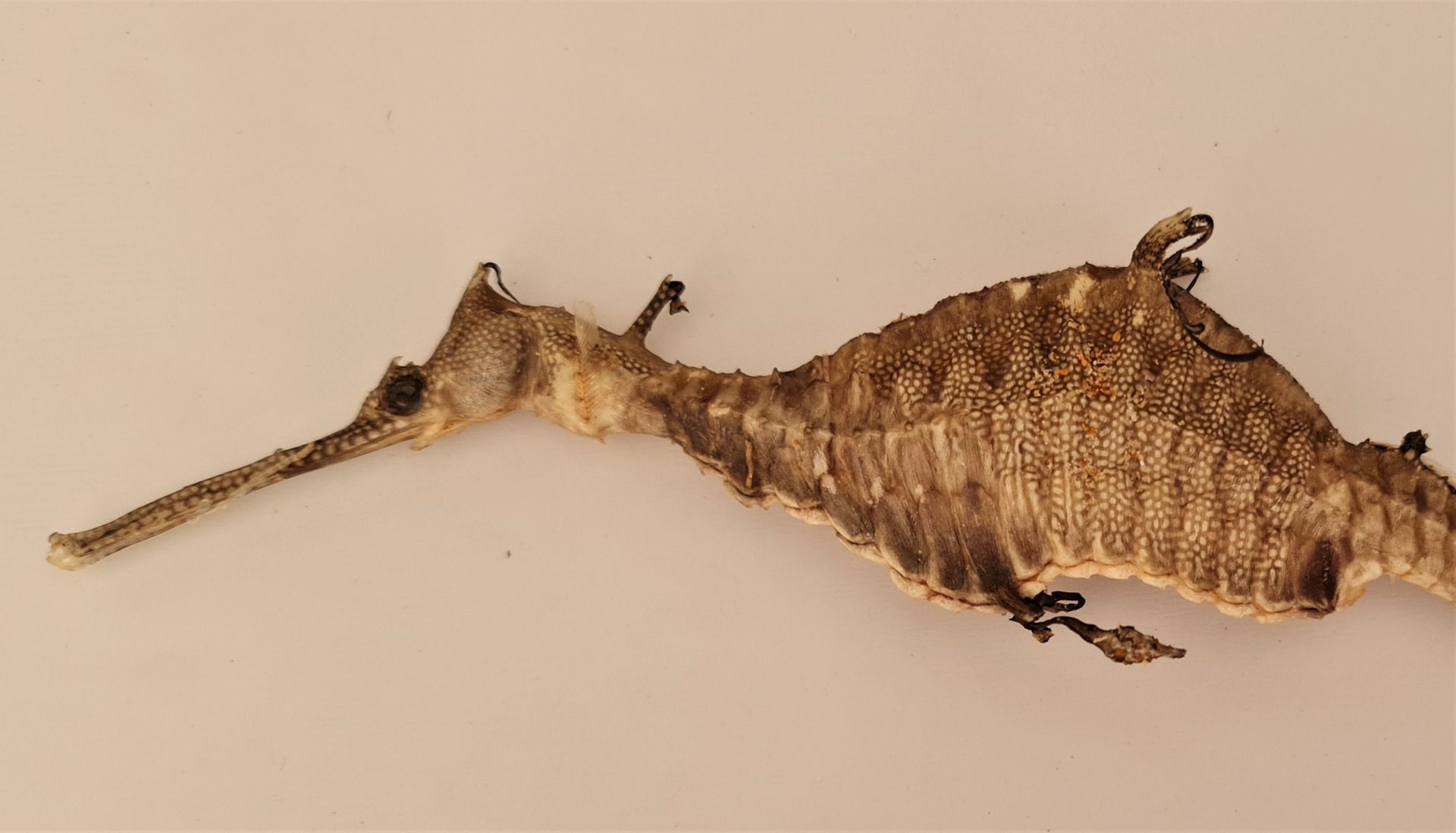
Specimen B-L Patterns result. Date: 20230503
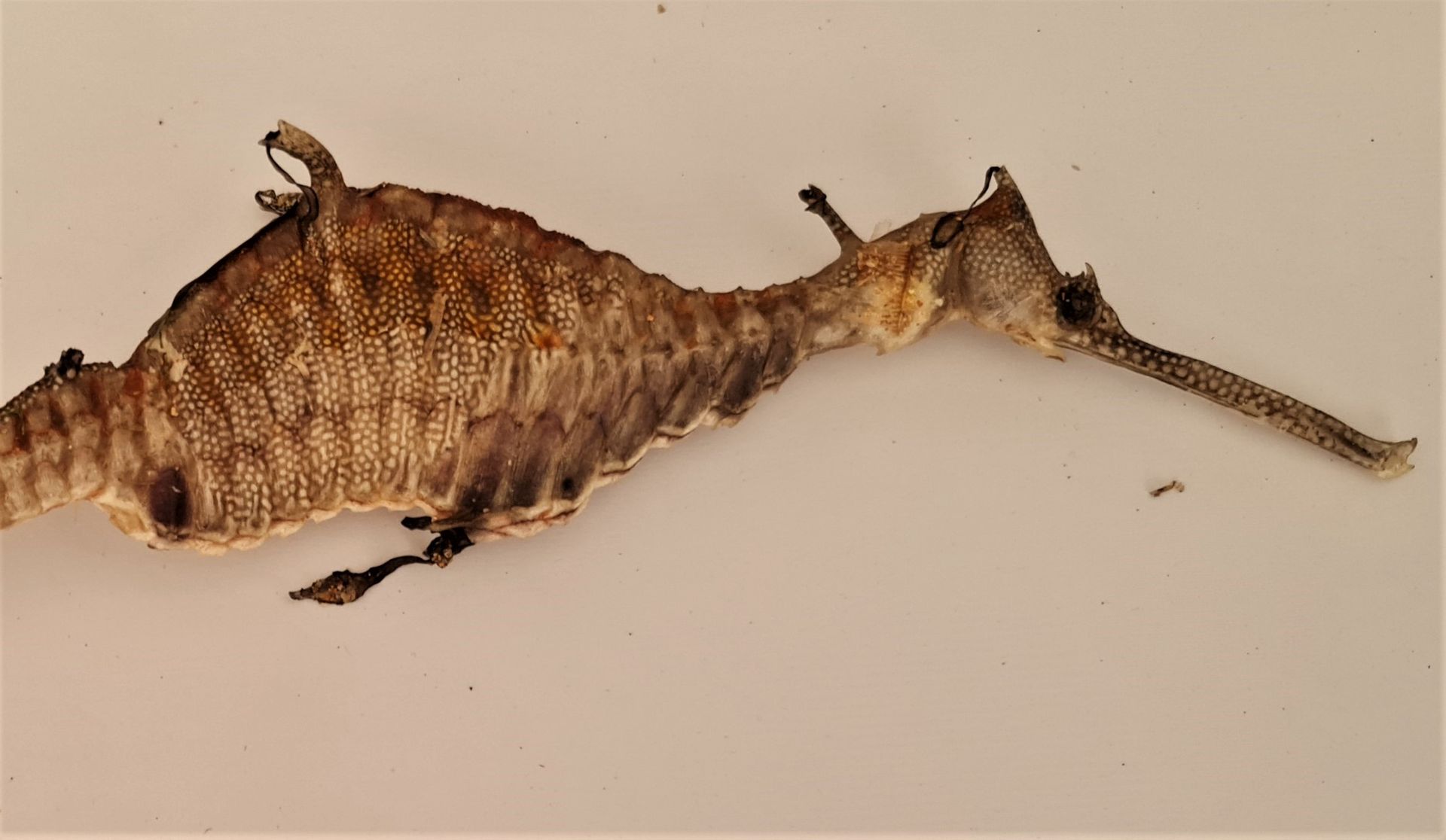
Specimen B-R Patterns result. Date: 20230503. Photos: Joe Mills
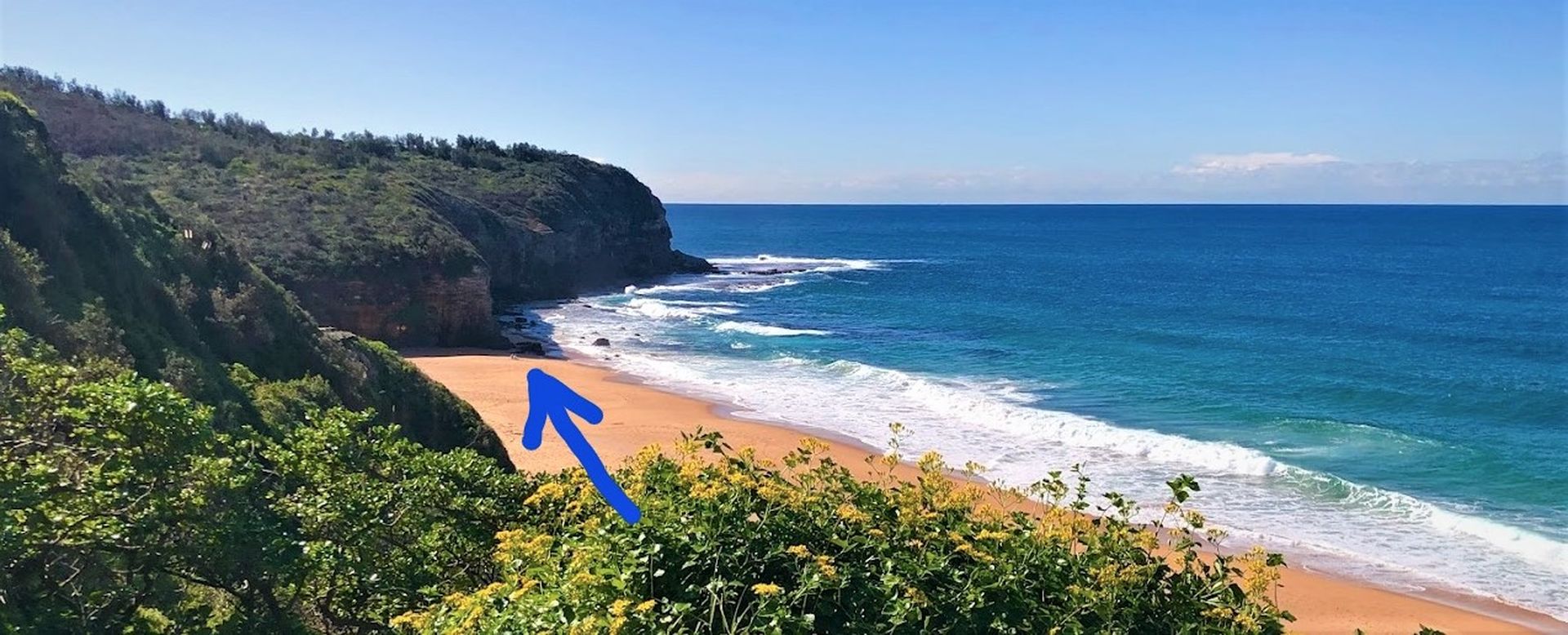
Where found: Photos: Joe Mills
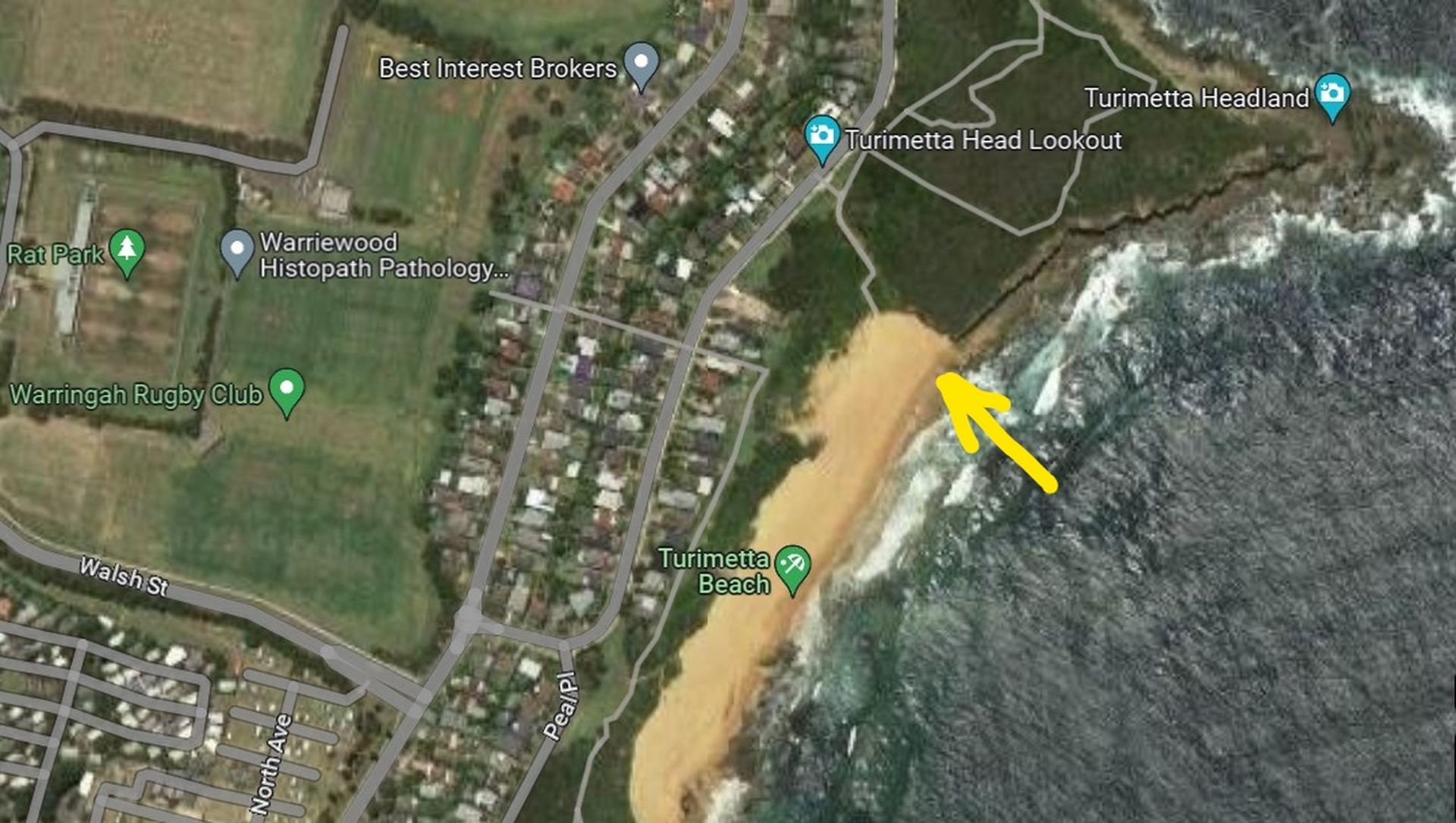
Seadragons are marine fishes found only in Australian waters and are part of the same family as seahorses and pipefishes. There are three known species of seadragons: the common or weedy, leafy, and recently discovered ruby seadragon. They are popular with ocean enthusiasts worldwide, but remain relatively mysterious to scientists, with many questions about their lives still unanswered.
“Seadragons live in shallow algal habitats, which are particularly vulnerable to climate change,” said Dr Greg Rouse, a leader of the SeadragonSearch project from Scripps Institution of Oceanography in San Diego, California.
“At the moment, we know little about the life histories of these unique fish. We suspect they don’t move far outside of small home ranges, but we need the community’s help to gather more information so that we can properly plan for their conservation,” he said.
Seadragon habitat loss is concerning for several reasons, including seadragons’ limited mobility, and the fact that genetic diversity is low in the majority of known populations, which could result in less resilience to environmental stressors.
UTS marine researchers Professor David Booth and Dr Selma Klanten are members of the SeadragonSearch project and looking forward to the contributions of community members keen to protect seadragons.
“We’re fortunate in Sydney, and in south-eastern Australia generally, to have populations of iconic weedy seadragons. Through this project, we will expand our links with citizen scientists and divers to help understand and conserve the dragons,” Professor Booth said.
Dr Klanten said a diver-based photo ID project in NSW, Victoria and Tasmania was already allowing her and colleagues to track individual dragons, and explore their movements and growth. SeadragonSearch will help to expand that on a national level.
“Our aim is to make sure Weedy Seadragon populations are maintained for future generations,” she said.
Dr Nerida Wilson, from the Western Australian Museum and University of Western Australia, and a co-leader of the project, said more information was needed to determine how seriously seadragons are threatened by human impacts.
Once community members submit their photographs of seadragons – underwater, washed up on the beach or in aquariums – computer vision is used to analyse the unique patterns on each seadragon’s face or body. A machine-learning algorithm suggests possible matches to other photos in the system, and researchers review those matches and assign each dragon to an individual identity. As sightings of individuals are repeated, the fish can be tracked by a variety of parameters, including year, season and location.
SeadragonSearch is collaborating with the not-for-profit organisation Wild Me, a US software developer that specialises in the use of artificial intelligence tools to collect and analyse data from threatened wildlife populations. The Lowe Family Foundation supports the research.
As well as UTS, the network of Australian partners includes the Victorian National Parks Association, The Hutchins School in Tasmania and independent marine ecologists and educators. So you will be amonmg good company by contributing to this project.
For more information, and to see a gallery of seadragons, visit SeadragonSearch.org. - and watch the video below to see how to submit your report. Also below is a short brief note (PDF) how you can help with their surveys.
Pittwater Online will also list this report under the Community Environment Organisations/Profiles listed in the Community News page past this Issue so you can easily find it when you find a Weedy Seadragon and need a refresher on how to be a part of and help with the SeadragonSearch project.
Let's dive on in Pittwater, and our lovely readers further up and down the coast - let's save our local Weedy Seadragons, and White's Seahorses, by saving their habitat!
 | weedysurveymethods.pdf Size : 842.531 Kb Type : pdf |
The common seadragon or Weedy Seadragon (Phyllopteryx taeniolatus) is a marine fish related to the seahorses. Adult common seadragons are a reddish colour, with yellow and purple markings; they have small leaf-like appendages that resemble kelp fronds providing camouflage and a number of short spines for protection.Males have narrower bodies and are darker than females. Seadragons have a long dorsal fin along the back and small pectoral fins on either side of the neck, which provide balance. Common seadragons can reach 45 cm (18 in) in length.
Individuals are observed either on their own or in pairs; feeding on tiny crustaceans and other zooplankton by sucking prey into their toothless mouths. As with seahorses, seadragon males are the sex that cares for the developing eggs. Females lay around 120 eggs onto the brood patch located on the underside of the males' tail. The eggs are fertilised and carried by the male for around a month before the hatchlings emerge. The young are independent at birth, beginning to eat shortly after. Common seadragons take about 28 months to reach sexual maturity, and may live for up to six years.
While the common seadragon is a desired species in the international aquarium trade, the volume of wild-caught individuals is small and therefore not currently a major threat. Instead, habitat loss and degradation due to human activities and pollution threaten common seadragons most.
The loss of suitable seagrass beds and loss of canopy seaweed from inshore rock reefs, coupled with natural history traits that make them poor dispersers, put the future of seadragon populations at risk. They live their whole lives in the places they are born. This species is not at present a victim of bycatch or a target of trade in traditional Chinese medicine, two activities which are currently a threat to many related seahorse and pipefish populations.
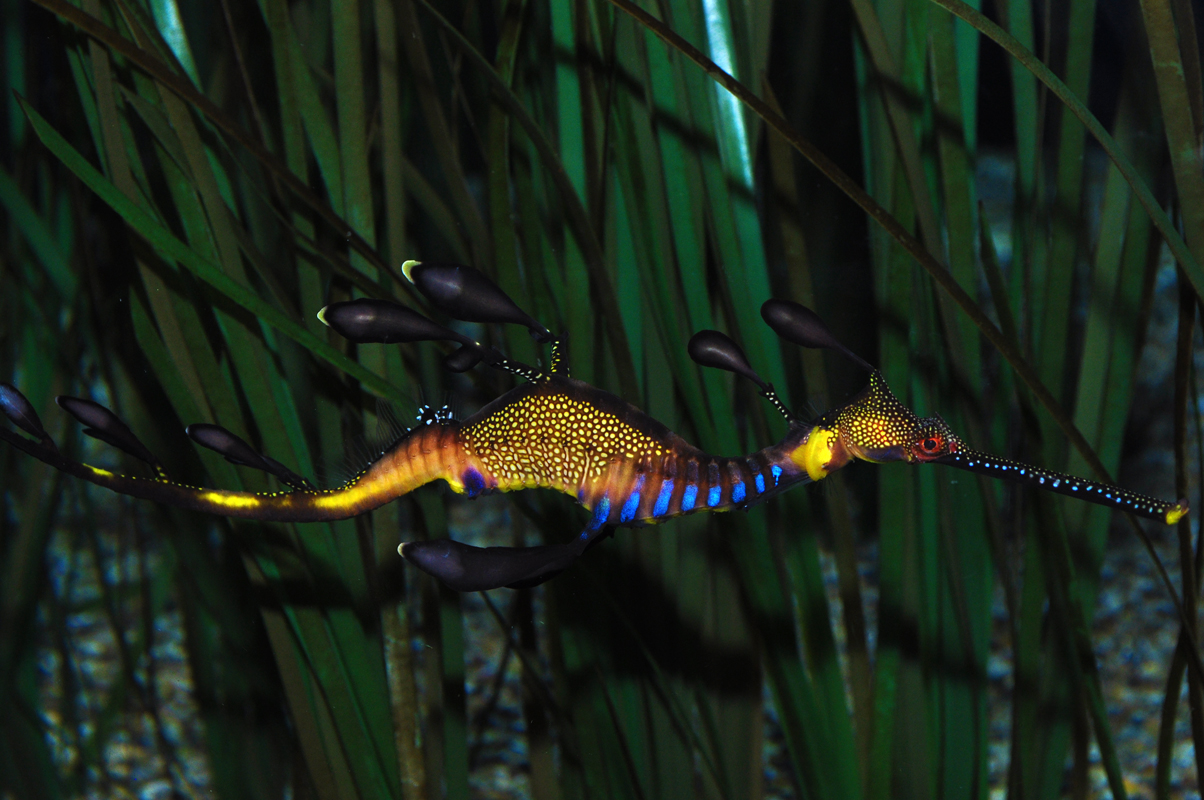
Weedy Seadragon (Phyllopteryx taeniolatus). Photo: ©Ta-graphy